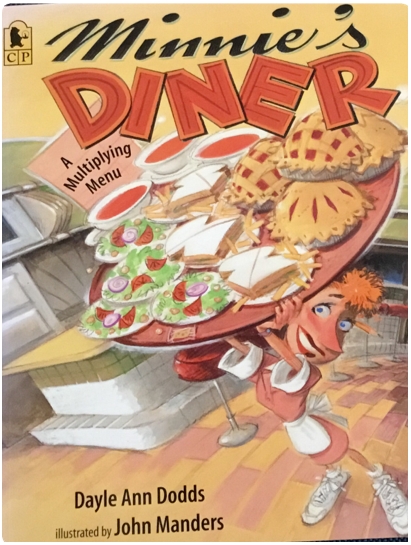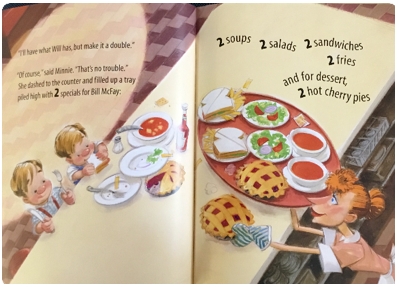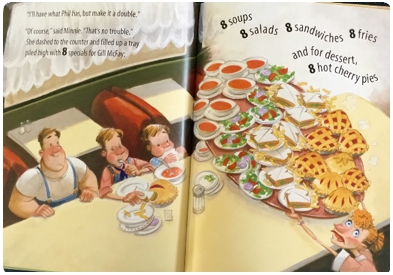Never too old for a maths picture book
We are all kids at heart and never too old to enjoy a good maths picture book — well I’m not!!
I rarely see maths picture books used in middle and upper primary classrooms, or even just there as part of the class ‘library’. Perhaps that’s because teachers haven’t come across them or perhaps they think they are babyish.
At Natural Maths we have just finished our major resource on multiplicative thinking for Years 4-7 and so I reached for the picture books filed on my shelf under multiplication.
The first one that I picked up was Minnie’s Diner

Minnie’s Diner is a book about doubling, and it shows quite clearly how quickly numbers grow when you double.
I remember back in the 80s -okay I know some of you were not even born then but one of my favourite questions was “How many times do you have to double 2 to get to l00?”
The answer was usually an Instant 50. 50×2 = 100, but 2×2 = 4, 4×2 = 8, 8×2 = 16, 16×2 = 32, 32×2 = 64, 64×2 = 128, which means if you double 2 six times you will go beyond 100.
One of Johnny’s memories of doubling was the story of an Indian Prince losing a game of chess to a traveler and being asked for a grain of corn on the first square of the board, 2 grains on the second square, and doubling that for each subsequent square. The story is told here but the volume of grain requested might never be grown!
What the question created though was that students had no visual idea of what happens to magnitude when you double and also that they associated multiplying by 2 simply as part of a multiplication table, 2×1 = 2, 2×2 = 4, 2×3 = 6 and so on.
So back to Minnie’s Diner and the visual support that it gives to the increasing magnitude as you can see in the images below.


One of the strategies that we showcase in Building Multiplicative Skills – Strategy Lessons is the double strategy. If I know 2 × 8= 16 then I can use that fact to work out 8 × 16 because I know that 2 × 2 = 4 and 4 × 2 = 8, that’s a double-double. Now I can use what I do know to work out what I don’t know. To multiply 16 by 4, I can double 16 which is 32 and double it again which is 64.
The book makes it really clear how doubling works for multiplication.
Simply enjoy the book or:
- Challenge the class to work out page by page how many items on the page or go straight to how many items did Minnie make altogether?
- Pose some ‘What If’ problems. For example, what if the first person had 3 of everything? How many would Papa have then and how many items would Minnie have cooked altogether?
- Feeling mean? What if the first tray had three quarters of a sandwich, three eighths of a pizza, 25 chips and a 375ml bottle of juice? What would be on each tray? How many sandwiches, pizzas, chips did Minnie make? How much juice did she serve altogether?
Of course, students can create their own variations at their own level.
If understanding magnitude seems to be a problem, collect a heap of resources and let students compare the magnitudes after doubling.
Back to our new product where we take a strategic approach to multiplicative thinking and problem solving with multiplicative strategies. For a full overview of the online course and resources, have a look here.
Also check out our multiplication book in the Back to Basics book series.
